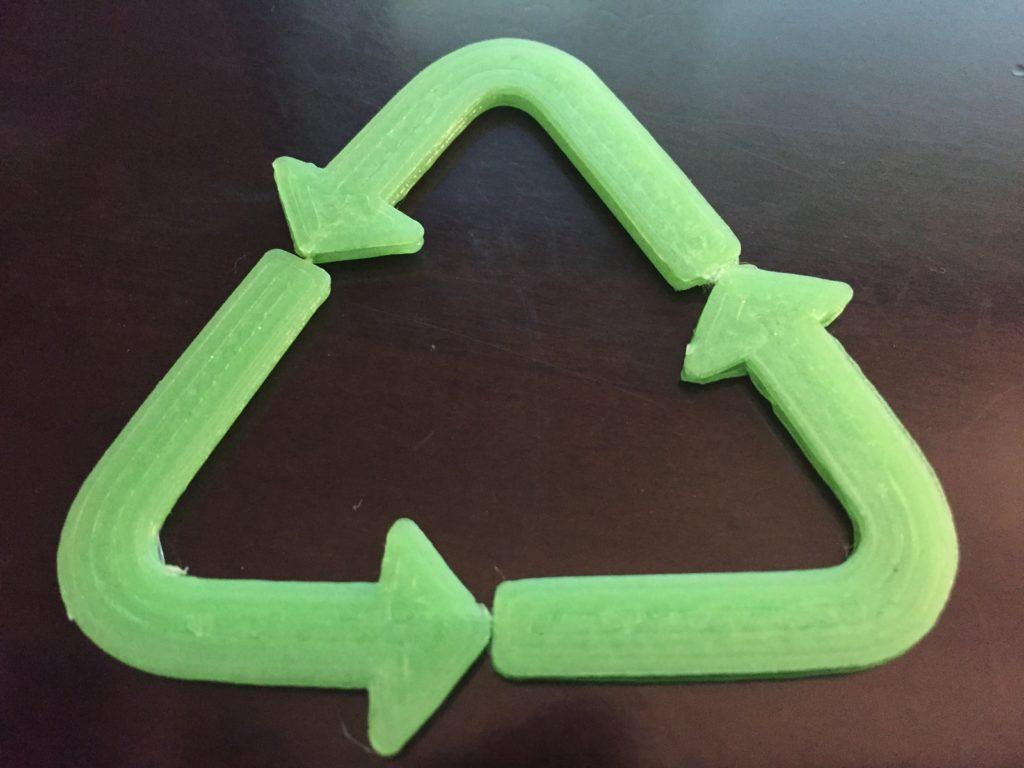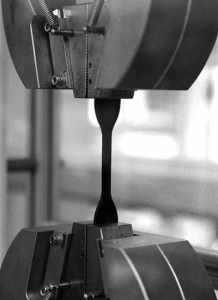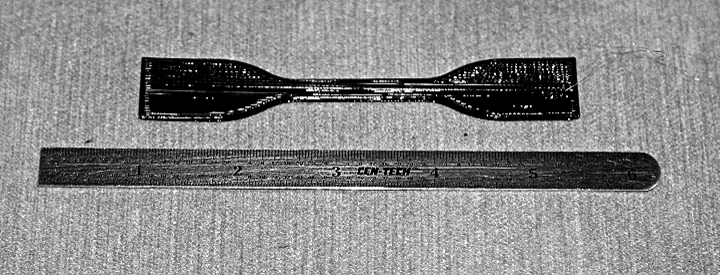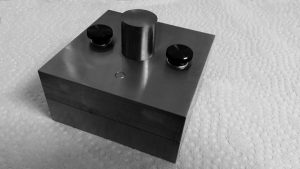While 3D printing continues to grow in leaps and bounds, it still creates a lot of waste, due to removed support structures, disposable prototypes, failed prints, and multiple iterations. Luckily, PLA is biodegradable, and the waste can be easily managed in multiple ways, such as combustion, composting, and dumping it in landfills. However, the best method is recycling: in terms of its environmental impact, it’s 16 times better than combustion and 50 times better than composting, and its carbon footprint is 3,000 times less than that of some plastics based in petroleum, like ABS.
Over the years, many 3D printing companies have started to offer 3D printing filament that’s made from recycled consumer waste, and even recycled filament itself. There are also filament extruders available for people who want to recycle their used material at home. Researchers Isabelle Anderson recently published a paper, titled “Mechanical Properties of Specimens 3D Printed with Virgin and Recycled Polylactic Acid,” about her work evaluating the various properties of 3D printed test specimens made with virgin PLA filament, and comparing them to specimens fabricated with PLA filament made from recycling the original 3D printed specimens.
The abstract reads, “With the 26% annual growth rate of additive manufacturing, especially in the area of 3D polymer printing, the amount of waste is increasing at a rapid rate. Limited research in the area of recycling has been produced, yet there are several recycling machines being developed for home use. Despite this work there is no published mechanical data on components produced with filament recycled from 3D printed parts. There is very limited data on mechanical properties of any 3D printed materials. This article compares the properties of parts 3D printed with virgin polylactic acid (PLA) to those printed with recycled PLA. Using commercially available PLA and an entry level 3D printer, tensile and shear specimens were produced and then tested for tensile yield strength, modulus of elasticity, shear yield strength, and hardness. The specimens were then ground up and re-extruded into filament, and a second set of specimens were produced and tested using this recycled PLA filament. Mechanical testing showed that 3D printing with recycled PLA is a viable option. With the recycled filament, tensile strength decreased 10.9%, shear strength increased 6.8%, and hardness decreased 2.4%. The tensile modulus of elasticity was statistically unchanged. Although the average mechanical properties before and after recycling were similar, there was more variability in the results of the recycled filament. Additionally, when printing with the recycled filament there was some nozzle clogging, while none occurred with the virgin filament. Overall, the mechanical properties of specimens 3D printed from recycled PLA filament were similar to virgin properties, encouraging further development in the area of recycling 3D printed filament.”
Distributive recycling at businesses and homes, when compared to centralized recycling, can reduce greenhouse gases, and could potentially save more than 100 million MJ of energy each year. However, there isn’t a lot of data about the mechanical properties of virgin 3D printed plastics, and even less about recycled 3D printed plastics.
Anderson chose to evaluate PLA in her study because it’s fairly easy to recycle into filament, and 3D printed all of the specimens on a Flashforge Creator.
“Initial test specimens were produced using virgin PLA filament with a nominal diameter of 1.75 mm. Tensile specimens were fabricated according to American Society of Testing Materials (ASTM) standard D638-14 Type IV,” Anderson wrote in the paper. “The shear specimens were fabricated as square plates with dimensions of 51.2 × 51.2 × 3.9 mm.”
Tensile and shear testing were both conducted on an Instron 3369 Testing Machine, while a handheld Shore D digital durometer was used to test hardness four times from the middle of the shear specimens. After the specimens made with virgin PLA filament were tested, Anderson sent them to Filabot, where they were then ground and re-extruded into 1.75 mm 3D printing filament.
“When the re-extruded filament was received the second set of tensile and shear specimens were produced using the same equipment, software, and method as used on the first set. These specimens were then tested with the same equipment and methods described above,” Anderson wrote.
The results showed that the properties of the specimens 3D printed with virgin PLA were similar to those of the recycled filament, which is “encouraging for the advancement of recycling technology in the area of 3D printing.”
“Although there were some minor difficulties working with the recycled filament, it produced specimens with very usable properties,” Anderson wrote in the paper. “These data are some of the first with large sample sizes, of 25–32, showing tensile, shear, and hardness values for 3D printed PLA, in both a virgin and a recycled format. This verifies that, using an entry level 3D printer, components can be produced with filament recycled from previously 3D printed parts with consistent mechanical properties that are only slightly less than the original parts.”
The two types of specimens even looked similar, displaying consistent surface finish and diameter. However, there were some differences between the recycled and virgin PLA, including the fact that the average mechanical properties of the 3D printed recycled specimens were 2-11% lower than those of the prints made with virgin PLA. Additionally, the average shear strength of the recycled material was 6.8% higher than that of the virgin PLA. But there are several possible reasons for these discrepancies, such as a different Poisson’s ratio.
“This project produces valuable baseline data on 3D printed PLA and validates the recycling process with similar data using recycled PLA,” Anderson concluded. “The data produced demonstrates that recycling 3D printed scrap materials into usable filament can yield parts with similar properties to parts produced with virgin filament. This creates the potential to save significant amounts of raw materials, cost, energy, and CO2 emissions in the production of 3D printed components.”
Discuss this research and other 3D printing topics at 3DPrintBoard.com or share your thoughts below.
Subscribe to Our Email Newsletter
Stay up-to-date on all the latest news from the 3D printing industry and receive information and offers from third party vendors.
Print Services
Upload your 3D Models and get them printed quickly and efficiently.
You May Also Like
Metal Powder Supplier Elementum 3D Added to $46B Air Force Contract
Elementum 3D, a Colorado-based developer and supplier of metal powders used in additive manufacturing (AM), announced that the company has been added to the vendors list in the fourth on-ramp...
Ursa Major Lands $28.6M AFRL Deal for 3D Printed Draper Engine Flight Demo
The US Air Force Research Laboratory’s (AFRL’s) Rocket Propulsion Division at Edwards Air Force Base has awarded a $28.6 million contract to Ursa Major for follow-on work related to the...
3D Printing Financials: Rocket Lab’s Record-Breaking Year and Over 20 Launches Coming in 2025
Rocket Lab (Nasdaq: RKLB) closed 2024 with its best year yet. The company launched more rockets, signed more contracts, and expanded deeper into spacecraft and satellite production than ever before....
US Air Force Taps Beehive to Study 3D Printed Jet Engines
Propulsion 3D printing firm Beehive Industries secured a contract from the U.S. Air Force Life Cycle Management Center through SOSSEC. SOSSEC is a company that manages Other Transactions Authority (OTA)...





































